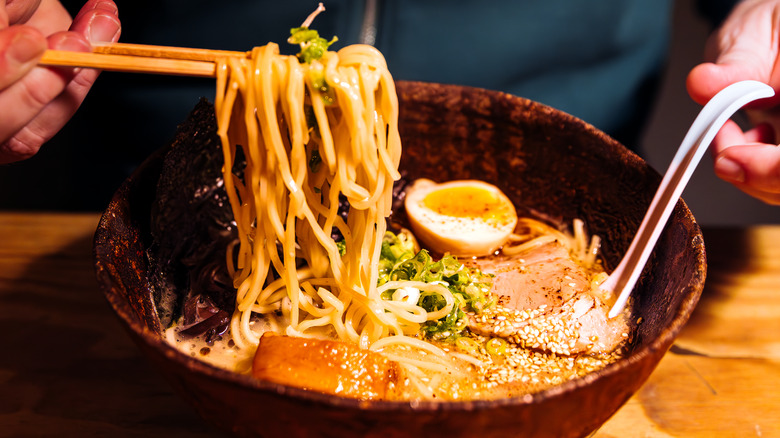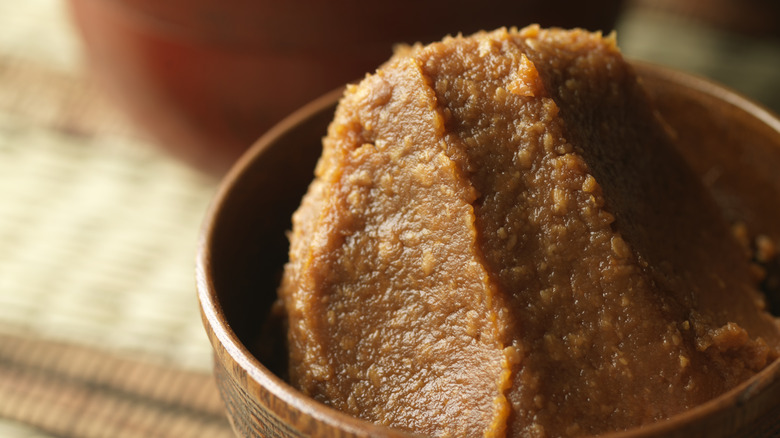What Happens If You Swap Miso For Salt When Making Ramen
To many of us, miso and ramen have become synonymous. After all, the umami-flavored fermented paste has been integral to Japanese cuisine for approximately 2,000 years — who are we to separate the two? But, if disaster strikes and you have a miso-less cupboard, or you just want to experiment with a ramen variation, salt could be an alternative. Tasting Table spoke to Momofuku Las Vegas Executive Chef James Bailey to see what impact this swap could have. "You could certainly swap salt for miso, and you'd have what's known as shio ramen," Bailey said, "but accounting for texture, flavor, and saltiness will be things to keep in mind."
There are some general differences: Salt creates a clearer broth, while miso lends a stronger sweet tang. However, the biggest impact is that swapping the two can leave a bit of a gap in your dish's depth of flavor. Since all ramen has a characteristic salinity and shio simply gets this directly from salt, eliminating the miso means it's on you to add other defining qualities. Lemon, clear stock (vegetable or chicken), and soaking ingredients like scallops overnight can all fine-tune the tastiest salt ramen. Of course, if shio ramen doesn't appeal to you, there are plenty of other adaptations. It's best to stay creative and open-minded when tackling this noodle dish, so set aside time to browse the many types of ramen. There'll be a match for you and your cupboard somewhere.
The role of miso in ramen
To really understand the impact of swapping miso for salt, it's essential to know the role of the paste. What exactly is it that you're eliminating from the dish? It's time to brush up on everything you need to know about miso. Fundamentally, the primary role of miso is to boost the flavor of the broth, adding umami to the dish's base. But there's even more to learn. For example, did you know that the paste isn't always the same? There are three types of miso, and their recommended use varies. White is the most popular choice for sweeter ramen, yellow is more acidic and salty, while red is supercharged with saline and fermented flavor (read: add sparingly). The stronger the paste you're replacing, the harder the role of "top taste shaper" becomes to fill. If you're accustomed to red miso ramen, that jump to subtle shio could feel severe for your tastebuds.
Color and character are further traits that miso imparts to this dish. If you axe the paste, be prepared to compensate for these roles with other ingredients. Shoyu (soy-based) ramen adds a punch. While with a mild salt-based broth, you can see why Bailey cautioned home chefs to be mindful of accounting for flavor. Think ginger for a natural, muted sweetness or soaking shiitakes overnight to rocket flavor intensity. So much of ramen's oomph comes from miso, so they are undoubtedly big shoes to fill.

